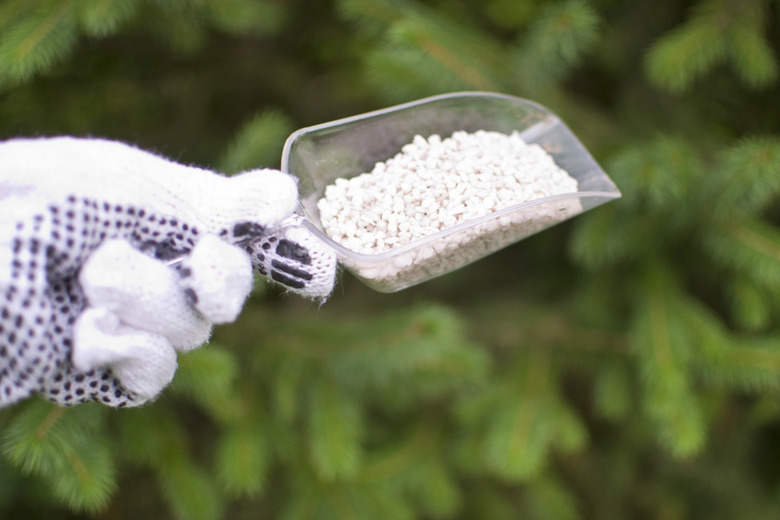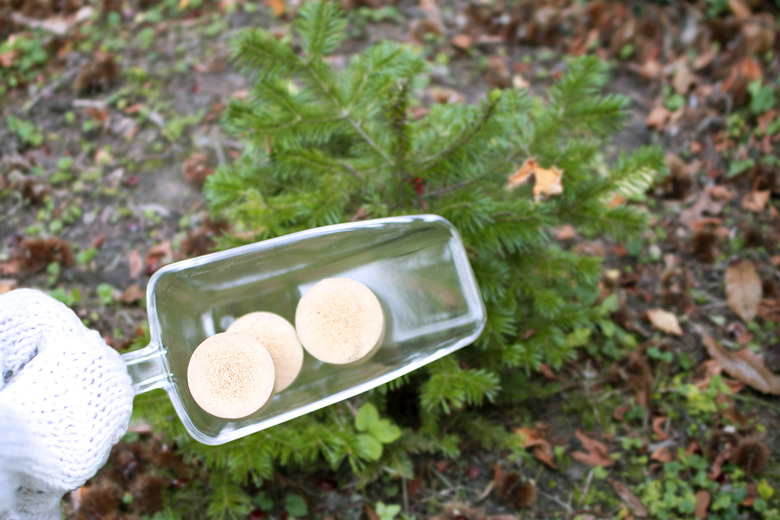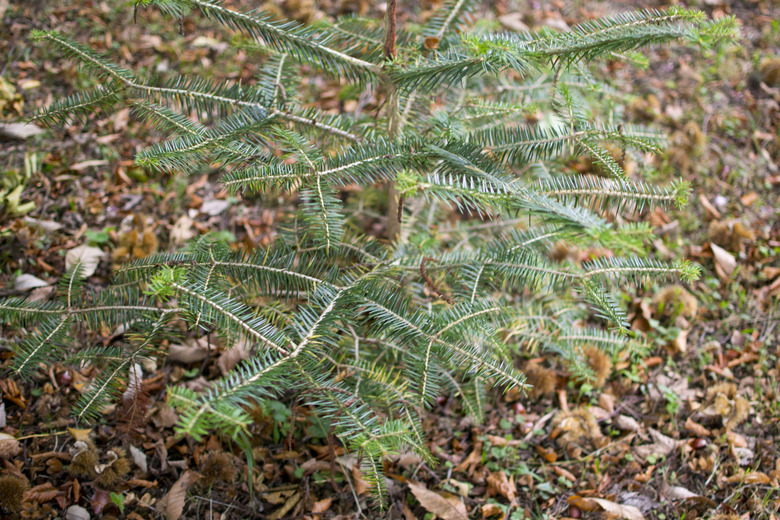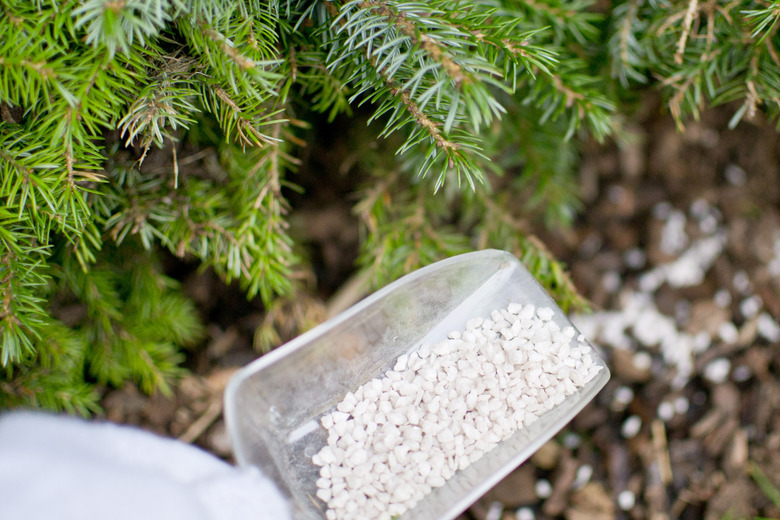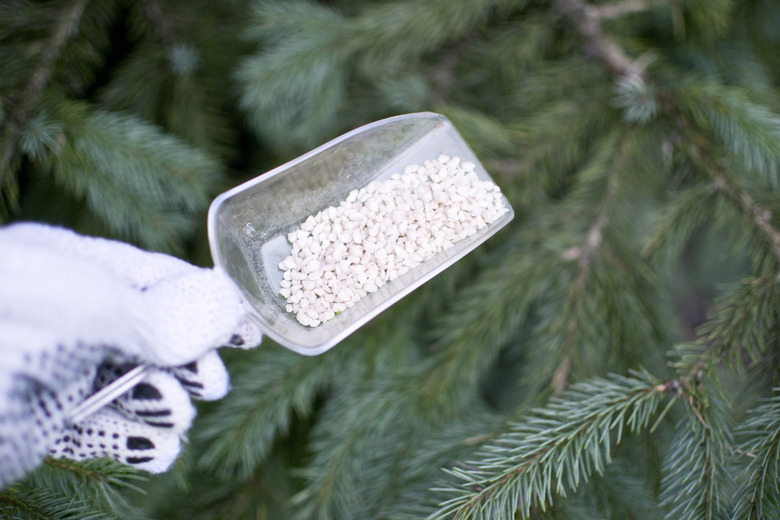When To Fertilize Pine Trees?
Fertilizer supplies trees with essential nutrients often needed when a plant is young. Besides feeding the trees, fertilizers can also change the soil's constitution, adding more acidity, which pine tree's crave. It is important to know when to fertilize pine trees to prevent over or under-fertilizing a growing tree.
Planting
When you plant pine trees, use fertilizer. A slow-release fertilizer, which comes in tablet form, is the ideal product, according to horticulturists at the North Carolina State University Agricultural and Life Sciences Extension. Because all young trees are vulnerable to over-fertilization, note whether other fertilizers are left in the soil before planting as this could damage the sapling. In the tree's second year, and in the following years, add 2 to 4 pounds of fertilizer for every 100 square feet of the pine garden or bed area. For pines growing out in fields, apply approximately 2 pounds of fertilizer for every inch of the tree trunk's diameter. For example, if the trunk width is 20 inches, add 40 pounds of fertilizer.
- Fertilizer supplies trees with essential nutrients often needed when a plant is young.
- Besides feeding the trees, fertilizers can also change the soil's constitution, adding more acidity, which pine tree's crave.
Growth-Spurt
The majority of trees undergo a growth spurt during their first spring, and a slower growth period in the summer and autumn, according to horticulturists at the University of Minnesota Extension. For the first spring growth spurt, supply the pine tree with a nutrient-rich fertilizer before the growth occurs. In the Midwest, the ideal time to fertilize is early May, just before the full spring season. For pine trees growing on sandy soils, split the applications: apply once in early spring, such as March; and again in late May. Note that if a tree shows yellowing, or slow or stunted growth, add fertilizer at any time during the growing season as this indicates the tree may be nutrient-deprived.
One Year Old
After a pine tree has grown outdoors for one year, supplement the pine with nourishing fertilizer in the fall. Sprinkle a standard fertilizer or a specific formula for acidic trees on top of the soil under the tree. Toss the fertilizer one to one and a half times from the distance of the trunk to the furthest edges of the branch canopy, called the drip line. For example, if the distance from trunk to drip line is 40 feet, sprinkle fertilizer 20 feet beyond the drip line, using about 1 cup of fertilizer per tree. Continue this every year for two or three years. After four or five years of growth, pines do not need regular fertilization due to natural decomposition of pine needles and other organic matter.
- The majority of trees undergo a growth spurt during their first spring, and a slower growth period in the summer and autumn, according to horticulturists at the University of Minnesota Extension.
- For pine trees growing on sandy soils, split the applications: apply once in early spring, such as March; and again in late May.
- Note that if a tree shows yellowing, or slow or stunted growth, add fertilizer at any time during the growing season as this indicates the tree may be nutrient-deprived.
Gray Pine
Also called California foothill pine, foothill pine, bull pine and digger pine, the gray pine is a common, bushy pine tree in California and the western U.S. deserts. For container-grown gray pines, fertilize the tree during the main summer growing season using a balanced fertilizer. When the growing season stops, use a finisher formulation of water-soluble fertilizer to supply the pine with necessary nutrients and maintain soil fertility, according to the USDA. After raising and fertilizing the gray pine in a container, plant the tree outside in late winter or early spring when the soil is damp.
